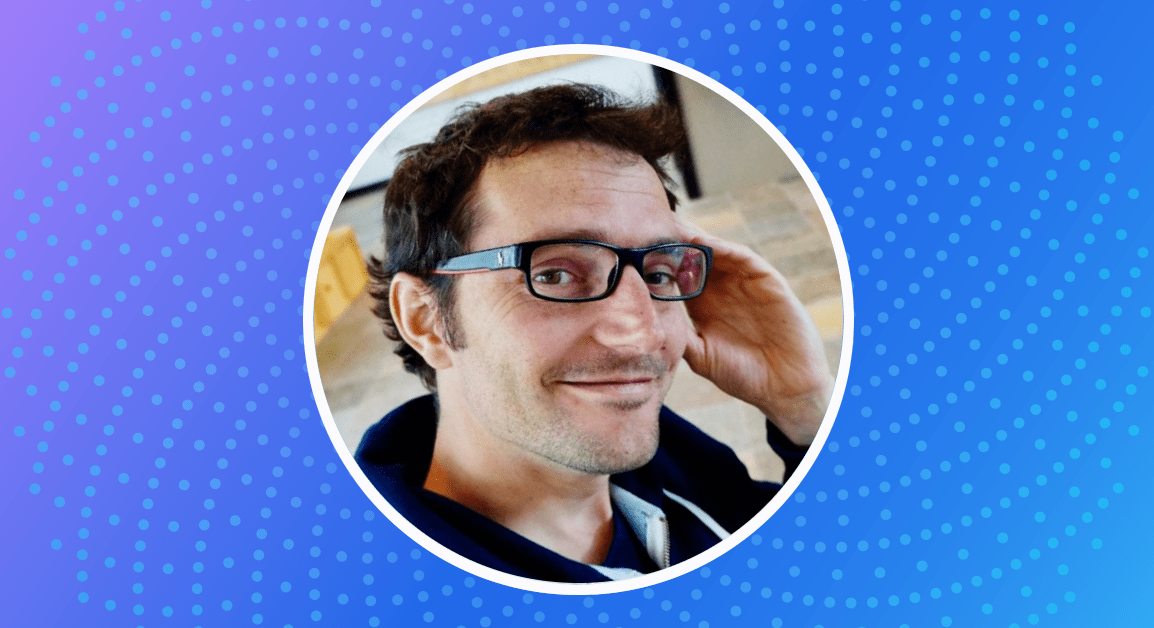Behind the Software: Flywheel Engineer Profiles - Nicolas Pannetier, Director, Scientific Solutions Engineering
Quick facts
-
Five years with Flywheel
-
Expertise in medical imaging and signal analysis, clinical trials and data science
-
Originally from France and currently resides in Boise, Idaho
The journey to Flywheel
With a background in physics, Nicolas spent about 10 years in academia, including as a researcher at the University of California, San Francisco, where he worked on applying big data to better treat diseases like Alzheimer’s and Parkinson’s disease. A shift to the private sphere saw Nicolas at several organizations, working as an imaging scientist helping pharmaceutical companies run clinical trials from an imaging standpoint and developing models to determine the emergence of Alzheimer’s based on biomarkers in MRIs. The latter role is where he first encountered Flywheel.
“We had some data management issues and saw the need for a platform to hold those images, train different models and evaluate them in every possible manner,” Nicolas explains. “That’s when we found Flywheel.”
The need for better imaging data management
Nicolas then joined Flywheel’s scientific solutions engineering team, holding various roles over the course of the past five years. He said his decision in part came from seeing the evolution of how imaging is used in clinical trials and the need for better big data solutions.
“It used to be that you would do research on a handful of scans,” he says. “When you go from 20 cases to now 200 to multiple tens of thousands of subjects, data management starts to be a big pain.”
As an imaging scientist, Nicolas sees what it takes from an infrastructure standpoint to run clinical trials at thousands of different sites that are all submitting data. There needs to be a way to unify the process around performing data curation as well as post processing of data, and creating and applying machine learning models.
“Your data set is going to change over time,” he says. “You're going to gather new data, and you want to retrain those models. You want to version control. You want data provenance. You want to do it all in a reproducible way. So, Flywheel addresses all those different needs from big data, data management, curation and compute to reproducibility, tracking and provenance.”
Making imaging data work, day to day
At Flywheel, Nicolas leads the team responsible for assembling the toolkit available within the solution to solve for clients’ specific needs, which involves a fair amount of problem solving.
“Often, they're coming from a place of needing to build an imaging data management platform from scratch, or they have some homegrown platforms that they want to get rid of,” Nicolas explains. “We work closely with the customer to understand the need and decide if existing solutions need to be stitched together or if we need to develop custom solutions.”
This may involve custom Gears, integrations and workflows to enable clients to do what they want to do on the platform. The goal is to make Flywheel work for each individual client so that it works with their unique imaging environment.
Bringing together imaging from various locations
To test a new drug-based therapy, pharmaceutical organizations need clean data, and lots of it. This brings a challenge that Nicolas and his team has come across at Flywheel — bringing together medical imaging that was acquired from different CROs involved with different clinical trials, often in different formats and collected at different stages, for use in new trials.
"We’ve been working with clients for years now to build a suite of curation tools that let you process diverse medical imaging data in a systematic manner so that a data manager can standardize, aggregate and consolidate this data across different workstreams,” Nicolas explains. “The idea is to enable big data so that data scientists can actually test their hypothesis and run innovative analyses on it.”
Solving complex data challenges
Another key challenge Nicolas is involved with tackling is the need for data de-identification—removing personally identifiable information (PII) from data while maintaining its integrity for research purposes. As different organizations have different de-identification needs, Flywheel works closely with clients to create tailored solutions.
“We’ve been basically developing solutions that let you do de-ID with Gears, whether it’s metadata stored in some file header or burnt-in pixel data. You want to be able to remove those PHI/PII in a standardized manner to comply with your local or federal regulatory body,” Nicolas says. “With Flywheel’s unique set of tools, we’ve been to design solutions that adapt to each customers unique needs.”
A passion for nature and craft
Nicolas recently moved to Boise after visiting and falling in love with the landscape and access to nature. When he’s not trying to wrap his head around questions of wrangling big data for real-world uses, Nicolas enjoys quality time with friends and family outdoors, including gardening, camping, biking and skiing — and he doesn’t mind taking work with him.
“I like to bring my laptop," Nicolas says. “With remote access, I can work on coding and debugging pretty abstract things from my camper van while digging into nature and enjoying some quiet.”
He also has taken to woodworking lately and likens it to the work he does with Flywheel.
“In both cases, you're trying to build something,” Nicolas explains. “And I have the same joy, whether it’s building little wood projects or building gears.”
Flywheel’s medical imaging and AI experts are ready to help with your individual imaging data needs. Whether it’s developing algorithms, testing them or helping you gain visibility into all of your files, we can help you get more from your imaging data. Schedule a call to get started.
